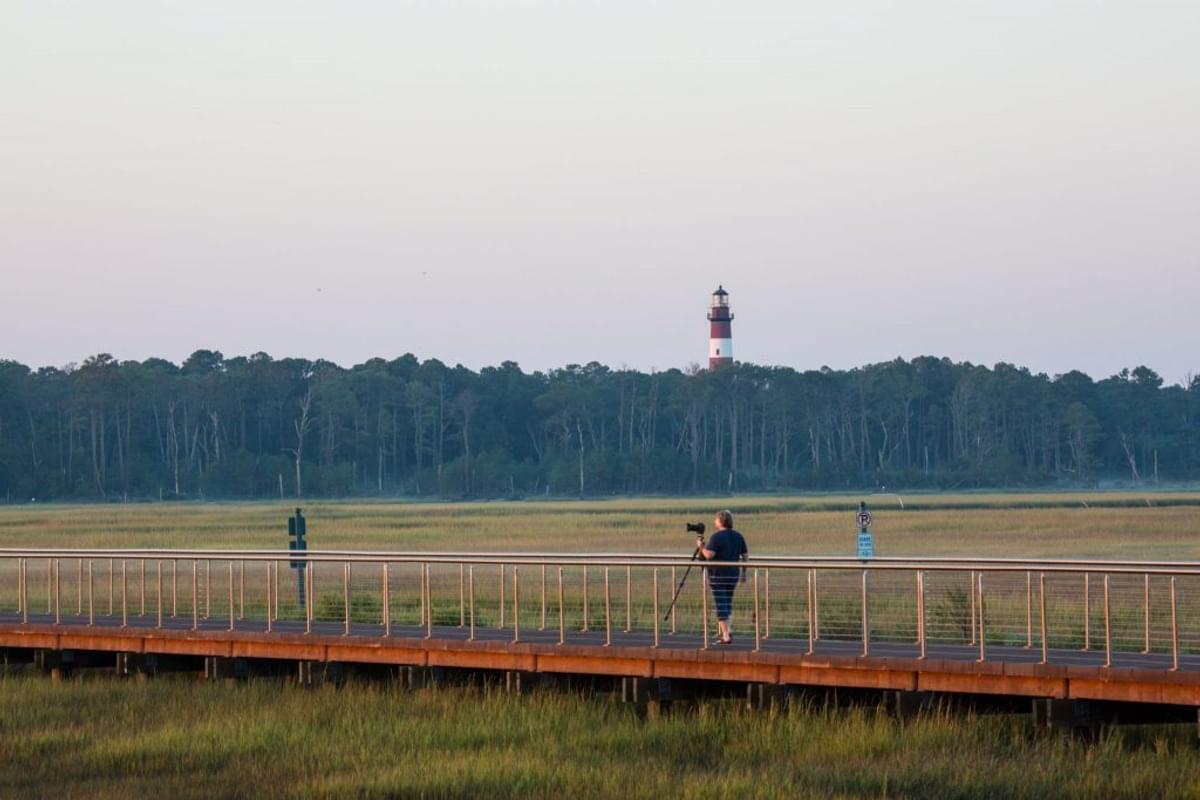Chincoteague NWR--Visitor Center
Chincoteague NWR--Visitor Center
8231 Beach Road Chincoteague, Virginia 23336
Chincoteague NWR trail mapChincoteague NWR Fees Table
Chincoteague NWR webpage (U.S. Fish and Wildlife Services)
Chincoteague NWR webpage (VA Birding & Wildlife Trail)
Tips for Birding
The parking lot is plenty good for picking up warblers, vireos, and the like in migration, but be sure to visit inside the building to view the feeder setup behind it. In winter, this can be one of the few sheltered places if the wind is bad, so bird it well if the weather isn't in your favor for Pine and Yellow-rumped Warblers, Gray Catbird, Northern Mockingbird, and the expected woodpeckers. You could also find as many as six species of sparrow here on a good day: Fox, Song, White-throated, and Swamp Sparrows, plus Dark-eyed Junco, and Eastern Towhee.
About this Location
The visitors center at Chincoteague NWR is named the Herbert H. Bateman Educational And Administrative Center. (The visitors center for the National Park Services is at Tom's Cove.)
The Bateman Center has a variety of exhibits, displays, brochures, and wildlife-oriented programs. Refuge staff and volunteers are available to answer questions and help plan activities.
Videos are shown by request daily in the visitor center auditorium, and programs on a variety of topics are offered during the summer. Inquire at the information desk for further details.
The gift shop, with a selection of books, clothing items, and jewelry, is located in the refuge visitor center and is run by the Chincoteague Natural History Association.
The Herbert H. Bateman Educational and Administrative Center is open 7 days a week. The hours are:
9:00 A.M. - 5:00 P.M. in the Summer
9:00 A.M. - 4:00 P.M. in the Spring, Fall & Winter
*Closed December 24th, 25th, 31st and January 1st
No additional fee is required besides that which was collected at the gate ($10 per vehicle, free on foot or bicycle).
About Chincoteague National Wildlife Refuge
See all hotspots at Chincoteague National Wildlife Refuge
This is one of the most heavily visited refuges in the national wildlife refuge system and acts as a gateway to the accessible barrier islands on the East Coast. A visitor center, bird checklists, beach access, and an array of wildlife species make this one of the nation’s premier sites for easily accessible wildlife viewing.
Administered by the U.S. Fish and Wildlife Service, Chincoteague National Wildlife Refuge is renowned for its diverse bird habitat where more than 320 species are known to use the refuge regularly during migration. It has at least 100 species of birds present at any given time. Shorebird concentrations at Chincoteague are so great during fall migration that it ranks as an important stopover area for migrating birds in the U.S east of the Rockies. The refuge was also ranked second in shorebird diversity among all 450 sites in the International Shorebird Survey in 1985. Chincoteague is also famous for the herds of Chincoteague ponies that were first introduced to the island in the 17th century. Much of the refuge’s operations focus on managing it for the benefit of the diverse wildlife species.
Located on the Indigenous homelands of the Pocomoke and Occohannock people, Chincoteague National Wildlife Refuge protects beach, dune, marsh, and maritime forest habitats. Established in 1943 to protect migratory birds, this refuge is now one of the most visited in the United States. This gem of Eastern Virginia is a birder's paradise, as well as the home of cultural treasures such as Assateague Lighthouse and the world-famous Chincoteague ponies.
Open year-round from dawn to dusk. See the fees table link above for information regarding fees and permits.
Features
Restrooms on site
Wheelchair accessible trail
Entrance fee
Roadside viewing
Content from Chincoteague NWR webpage (U.S. Fish and Wildlife Services)
Last updated June 3, 2023
 Assateague Lighthouse from causeway
Assateague Lighthouse from causewayChincoteague Chamber of Commerce